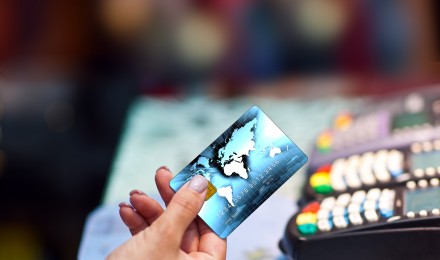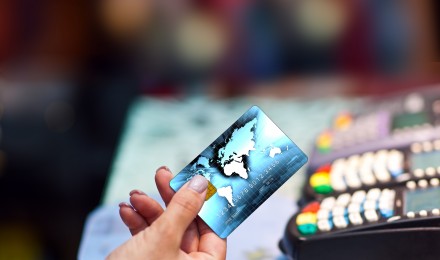You may not read or hear about identity theft everyday. However, this crime remains a major concern, affecting about 12 million people each year. But if you’ve never been a victim, or if you don’t know anyone personally affected, you may never think about identity theft.
Identity theft can involve someone stealing your credit card and going on a shopping spree. These minor incidents are typically easy to resolve, at which time the bank cancels and issues a new card. But identity theft can take others form, and if someone steals your Social Security number and assumes your identity to get a mortgage or auto loan, the situation can get a bit crazy.
Depending on the severity of the theft, it can take up to 30 hours to resolve each identity theft crime. And if identity theft ruins your credit score, buying a house or a car may be impossible until the matter is resolved.
These reasons alone underscore the importance of protecting your identity. But the question remains, are you taking the necessary steps to ensure you’re protecting your identity online?
1. Use powerful passwords
A child or spouse’s name as the password for your online accounts may be easy to remember. However, the purpose of a password is to protect your account information. If anyone can easily guess your passwords, its like leaving the keys in the front door of your house. With your name, your email address and a “not-so-secret” password, online thieves can hack into your online accounts and access your bank account numbers and credit card numbers.
Get creative and use passwords that aren’t obvious, and change your passwords often – maybe once or twice a year.
2. Keep your antivirus and anti-malware updated
It isn’t enough to purchase virus protection for your computer, you have to make sure that your protection stays up-to-date. Thieves bet on the fact that many people will let their virus protection lapse. And when it does, they’re usually on standby ready to hack into accounts and steal personal information. With your computer open to attacks, hackers can plant viruses that record your every move online, which is how they gain access to your login information.
3. Phishing is not dead
You may know the danger of giving your personal information over the phone, and you may recognize scams that hit your inbox. However, some hackers can design emails that appear legitimate, and you may believe that these emails came from your bank or credit card company.
Remember, your credit card company or bank will never ask you to update personal information via email. And if you have to update any information, they will not include a link in the email. Instead, a reputable company will request that you visit the website by typing the web address in your browser.
By clicking a link included in your email, you’ll most likely be diverted to a fraudulent page, which may closely resemble your bank or credit card company’s webpage. If you enter any information on this page, the information goes straight to the hackers.
4. Log out from websites
Unfortunately, some people do not notice identity theft until hackers charge up their credit cards or open accounts in their name. To better protect yourself, go online and check your bank accounts at least once a day, and your credit card accounts once or twice a week. After reviewing accounts, always log out from the sites, to ensure you are protecting your identity, especially if you’re using a public computer or public Wi-Fi.
You may not read or hear about identity theft everyday. However, this crime remains a major concern, affecting about 12 million people each year. But if you’ve never been a victim, or if you don’t know anyone personally affected, you may never think about identity theft.
Identity theft can involve someone stealing your credit card and going on a shopping spree. These minor incidents are typically easy to resolve, at which time the bank cancels and issues a new card. But identity theft can take others form, and if someone steals your Social Security number and assumes your identity to get a mortgage or auto loan, the situation can get a bit crazy.
Depending on the severity of the theft, it can take up to 30 hours to resolve each identity theft crime. And if identity theft ruins your credit score, buying a house or a car may be impossible until the matter is resolved.
These reasons alone underscore the importance of protecting your identity. But the question remains, are you taking the necessary steps to ensure you’re protecting your identity online?
1. Use powerful passwords
A child or spouse’s name as the password for your online accounts may be easy to remember. However, the purpose of a password is to protect your account information. If anyone can easily guess your passwords, its like leaving the keys in the front door of your house. With your name, your email address and a “not-so-secret” password, online thieves can hack into your online accounts and access your bank account numbers and credit card numbers.
Get creative and use passwords that aren’t obvious, and change your passwords often – maybe once or twice a year.
2. Keep your antivirus and anti-malware updated
It isn’t enough to purchase virus protection for your computer, you have to make sure that your protection stays up-to-date. Thieves bet on the fact that many people will let their virus protection lapse. And when it does, they’re usually on standby ready to hack into accounts and steal personal information. With your computer open to attacks, hackers can plant viruses that record your every move online, which is how they gain access to your login information.
3. Phishing is not dead
You may know the danger of giving your personal information over the phone, and you may recognize scams that hit your inbox. However, some hackers can design emails that appear legitimate, and you may believe that these emails came from your bank or credit card company.
Remember, your credit card company or bank will never ask you to update personal information via email. And if you have to update any information, they will not include a link in the email. Instead, a reputable company will request that you visit the website by typing the web address in your browser.
By clicking a link included in your email, you’ll most likely be diverted to a fraudulent page, which may closely resemble your bank or credit card company’s webpage. If you enter any information on this page, the information goes straight to the hackers.
4. Log out from websites
Unfortunately, some people do not notice identity theft until hackers charge up their credit cards or open accounts in their name. To better protect yourself, go online and check your bank accounts at least once a day, and your credit card accounts once or twice a week. After reviewing accounts, always log out from the sites, to ensure you are protecting your identity, especially if you’re using a public computer or public Wi-Fi.







